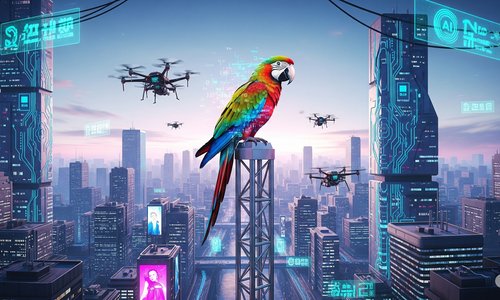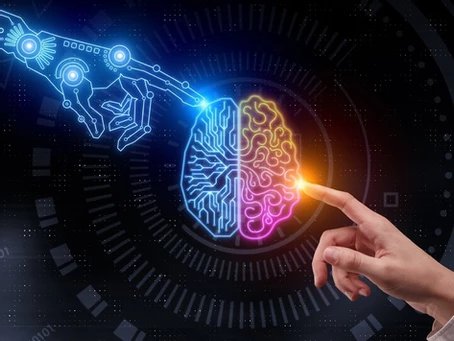
A Promessa e o Perigo da Nova Revolução Digital
A nova corrida tecnológica global levanta uma pergunta urgente: estamos prontos para confiar na inteligência que criamos?

Sou fascinado pela capacidade humana de criar modelos e arquiteturas das mais criativas para resolver problemas ou gerar produtos poderosos com a utilização de inteligência artificial. O uso de arquiteturas híbridas faz com que seja possível dispositivos inteligentes como a Sophia, da Hanson Robotics. Ela tem sua arquitetura desenvolvida por Ben Goertzel e sua equipe, que hoje está a frente da SingularityNet. A Sophia combina robótica para movimentos faciais, reconhecimento de imagem, geração e processamento natural de linguagem, apenas para citar algumas que é possível afirmar, sem conhecer mais detalhes sobre a sua arquitetura.
Em janeiro deste ano, a Samsung apresentou na CES 2020 a sua versão de humanos artificiais, chamados de NEON. Conforme a fabricante, deve estar disponível para testes beta até o final do ano em algumas localidades. Já havia falado de humanos digitais em meu último artigo “Inteligência Artificial: a tecnologia que você não pode deixar de entender”. Humanos artificiais são exemplos de arquiteturas combinadas que podem mimetizar uma parte das atividades que nós humanos podemos fazer, como interagir, nos movimentar, conversar e responder a perguntas. O resultado é impressionante.


Um dos campos de maior potencial para arquiteturas criativas dentro da inteligência artificial é o deep learning, ou aprendizagem profunda. De modo bastante simplificado, o deep learning utiliza redes neurais, algoritmos que se baseiam no cérebro humano com funções matemáticas que simulam um neurônio biológico, com muitas camadas, de forma a combinar dados, identificar padrões e aprender por meio deles.
Uma arquitetura hoje bastante conhecida pela maioria das pessoas que trabalha com aprendizagem de máquina se chama GAN –Generative Adversarial Networks. A arquitetura GAN é baseada em duas redes neurais com “habilidades” diferentes ligadas entre si.
A primeira destas redes é uma rede neural programada para gerar imagens de uma determinada natureza. Essas imagens podem ser totalmente aleatórias, ou já terem um padrão pré-estabelecido vindo de “treinamentos” anteriores, como imagens de pessoas, imagens de carros, imagens de quartos de casa... A segunda rede é uma rede discriminatória, ela discrimina imagens reais de um dado padrão: imagens de pessoas, carros e quartos de casa, em relação a imagens falsas ou que não representam aquele padrão. Ela foi “treinada” apenas por imagens reais.
Na arquitetura GAN, você conecta uma rede neural a outra. O objetivo da rede neural geradora de imagens é poder “enganar” a rede discriminante fazendo com que essa rede acredite que a imagem gerada artificialmente seja uma imagem verdadeira.
A arquitetura é construída de tal forma que cada vez que a rede geradora de imagem “engana” a rede discriminante e gera uma imagem com tão boa qualidade –que é considerada uma imagem real de uma pessoa, carro ou quarto–, ela ganha uma espécie de bonificação (tem seus pesos sinápticos artificiais aumentados), mas toda vez que ela não consegue essa façanha, tem uma espécie de punição (tem seus pesos sinápticos artificiais diminuídos). Isso cria uma rede geradora de imagens que converge para se tornar muito eficiente em gerar imagens artificiais tão boas como as reais.

Um dos exemplos que ficou bem conhecido pelo mundo foi o “This person does not exist”, ou em português “Essa pessoa não existe” –um site que cada vez que é acessado, cria uma imagem de uma pessoa artificialmente gerada. Uma pessoa que nunca existiu na face da Terra, mas que tem uma imagem tão rica em detalhes e tão parecida com um humano que não há nenhuma evidência que nós possamos apresentar de que se trata de uma imagem não real. E apenas para ficar clara a diferença, faz muito tempo que temos tecnologias para criar imagens artificiais muito boas como as reais. A grande questão aqui é que faz alguns anos criamos um algoritmo que gera imagens reais instantaneamente e de altíssima qualidade. Criamos a máquina de gerar estas imagens.
A arquitetura GAN tem revolucionado o mundo do deep learning e é também uma das arquiteturas mais usadas no que no jargão popular é conhecido como “deep fake”, a construção de notícias e imagens falsas usando inteligência artificial e deep learning. Ou seja, há ainda muitas questões éticas e de governança que precisamos discutir antes de sair usando essa tecnologia tão poderosa, e isso será alvo de um outro artigo sobre o tema.
Há inúmeras aplicações de arquiteturas de redes neurais interessantes. Outra que gosto muito é uma arquitetura conhecida como “Hierarchical Deep Models”. Trata-se de uma outra maneira de organizar as redes neurais de modo a poder compreender rapidamente padrões de baixo nível como formatos e cores, para, a partir desta combinação, gerar novos elementos com base em pouquíssimos dados para treinamentos.
Há exemplos que geram esboços de imagens como frutas e animais que são baseados em apenas três modelos. Ou seja, também aqui há um destaque para a maneira com que as redes neurais foram organizadas: (1) primeiro aprende-se por meio de redes neurais mais simples para extrair os padrões básicos de uma imagem, (2) depois organizam-se redes de mais alto nível que conectam estas redes de padrões básicos, criando uma correlação entre estes diversos padrões, e (3) para cada categoria nova a ser treinada, cria-se uma nova relação de hierarquia e prioridades entre as redes mais básicas.
Essa arquitetura gera estruturas de aprendizagem muito eficientes que conseguem compreender utilizando pouquíssimos exemplos, e trazer resultados impressionantes para algoritmos que usam basicamente funções matemáticas.

Há um campo fantástico de construção de novos modelos arquitetônicos e novas soluções para diversos problemas que enfrentamos no nosso dia a dia. A imaginação humana aliada ao conhecimento das tecnologias relacionadas à inteligência artificial, sem dúvida, tem um potencial revolucionário em todos os aspectos.
Não é à toa que sou tão entusiasmado por essa tecnologia, creio que temos muito por fazer para transformar o mundo em que vivemos em um mundo muito melhor. A inteligência artificial é, sem dúvida, uma tecnologia que pode ampliar e muito todo o potencial humano, neste sentido. Quem sabe você não seja uma destas pessoas que construa algo revolucionário?
Conselheiro fundador da I2AI – Associação Internacional de Inteligência Artificial. Também é sócio-fundador da Engrama, sócio da Startup Egronn, e na consultoria Advance e investidor na startup Agrointeli . Tem mais de 20 anos de experiência em multinacionais como Siemens, Eaton e Voith, com vivência em países e culturas tão diversas como Estados Unidos, Alemanha e China.
Palestrante internacional, professor, pesquisador, autor, empreendedor serial, e amante de tecnologia. É apaixonado pelo os temas de Estratégia, Inteligência Competitiva e Inovação.
É Doutor em Gestão da Inovação e Mestre em Redes Bayesianas (abordagem de IA) pela FEA-USP. É pós-graduado em Administração pela FGV e graduado em Engenharia Mecânica pela Unicamp.

A nova corrida tecnológica global levanta uma pergunta urgente: estamos prontos para confiar na inteligência que criamos?

Por que dominar a IA será a nova alfabetização do século XXI

Conselhos de Administração devem evoluir da supervisão reativa para a antecipação estratégica, frente à crescente complexidade e volatilidade dos ambientes de negócios.

De 14 a 25 de julho, reserve suas manhãs das 08h00 às 09h30 para participar da tradicional Maratona I2AI! Uma jornada intensa com debates e palestras sobre temas essenciais: Ética,